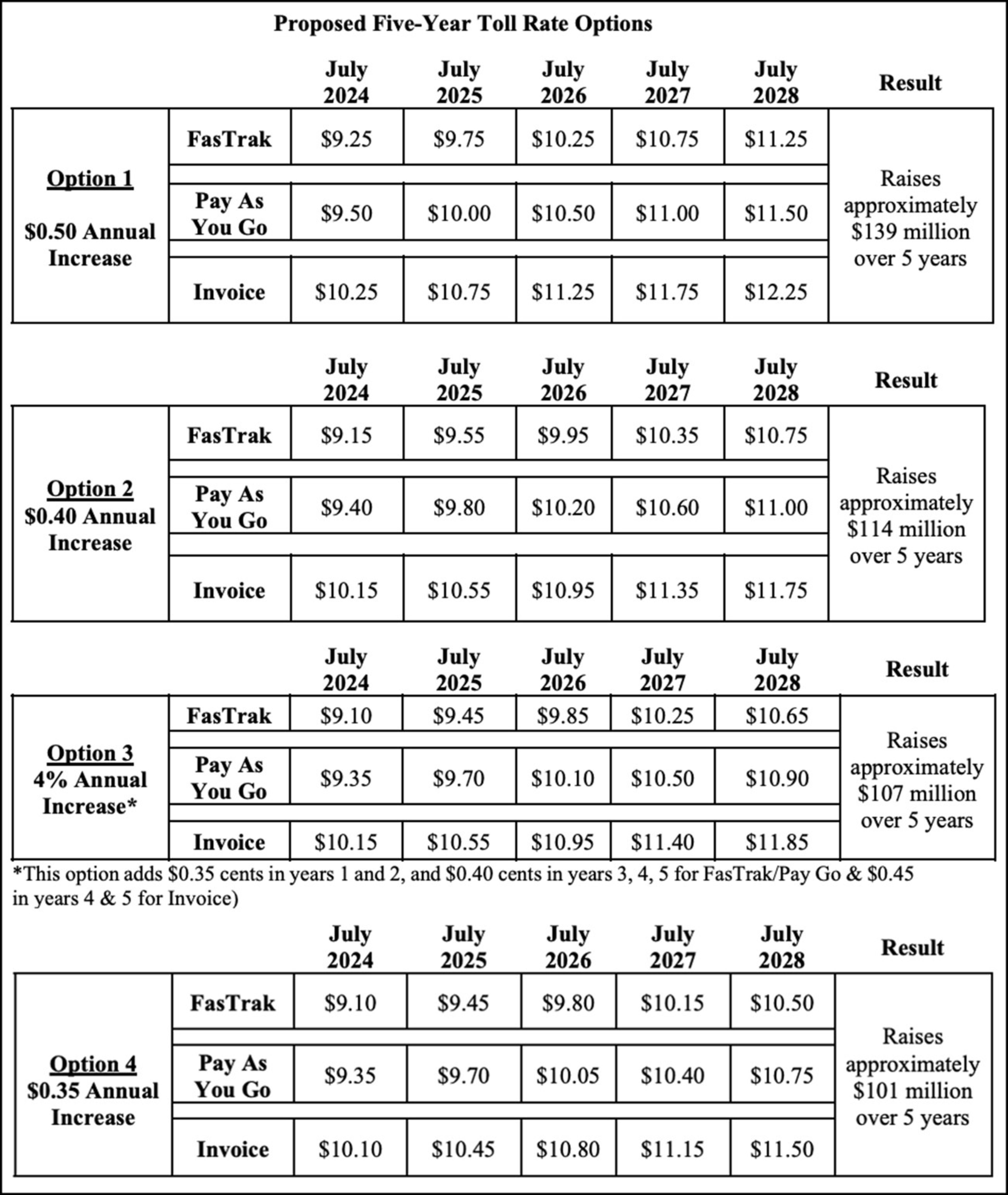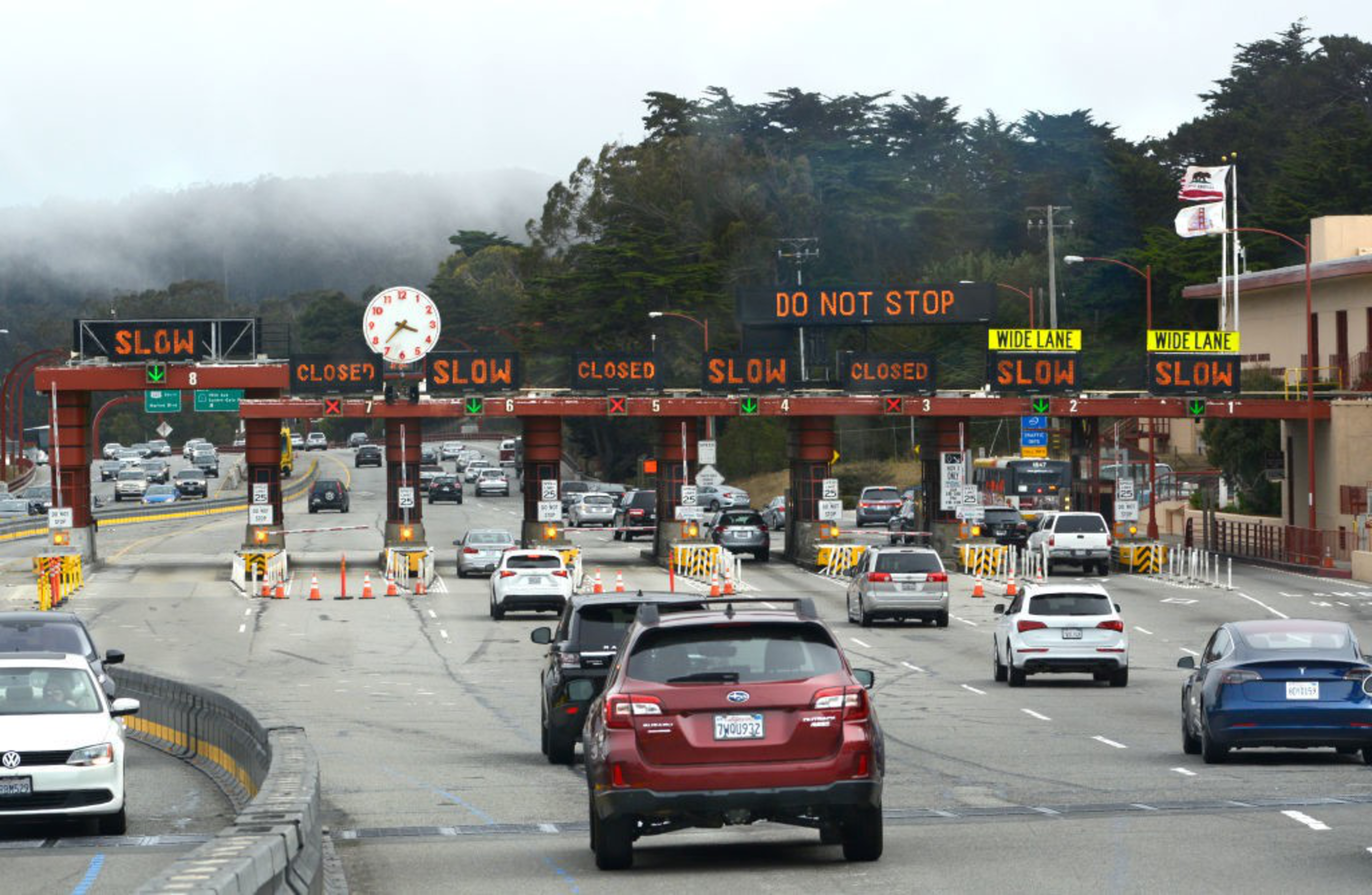Driving over the Golden Gate Bridge’s International Orange span could get pricier if a March vote passes.
Bridge officials want to hike the toll price to raise more cash as they attempt to navigate a storm in the form of a $220 million budget gap.
The Golden Gate Bridge, Highway and Transportation District has four options on the table that would hike tolls annually over the next five years. Still, the toll increase will only raise roughly $100 million, or under half of the funds needed to weather the financial storm, a new report states.
It’s possible officials could scrap all four plans and come up with another option, potentially delaying a rise in toll fees. However, the district has always approved an option in the past without delay, according to a spokesperson.
The new five-year toll increase plan comes after a previous five-year hike was approved in 2019. Since then, the Golden Gate Bridge tolls have increased from $7.35 to $8.75 in 2023 for FasTrak users and $8.20 to $9.75 without it, with the most recent toll hike happening in June 2023. FasTrak accounts for more than 80% of bridge crossings, according to a spokesperson.
READ MORE: The Yearslong Photo Odyssey of a Man, a Bridge and Countless Strangers
Here are the most costly and least costly toll hike options up for consideration:
A $0.50 annual increase, raising $149 million over five years:
- FasTrak users would pay $9.25 starting in July and $11.25 by July 2028.
- “Pay-as-You-Go” users, those who register their license plates or set up one-time payments through the district, would pay $9.50 in July and $11.50 by July 2028.
- Those who pay through invoices would pay $10.25 in July and $12.25 by July 2028.
A $0.35 annual increase, raising $101 million over five years:
- FasTrak users would pay $9.10 starting in July and $10.50 by July 2028.
- “Pay-as-You-Go” users would pay $9.35 in July and $10.75 by July 2028.
- Those who pay through invoices would pay $10.10 in July and $11.50 by July 2028.

Bridge toll revenues are the primary source of funds for the operation and maintenance of the Golden Gate Bridge and the district’s transit operation, which includes the Golden Gate Transit bus and ferry network.
The budget shortfall is primarily due to fewer bridge crossings than before the pandemic. Currently, the district sees 80% to 85% of pre-Covid traffic, with commute hours down almost 30%, resulting in an annual loss of $25 to $30 million.
Federal funding is also drying up. The district received one-time federal relief funding during the pandemic to prevent layoffs and maintain transit service, but it will be gone by June, the district said.
Ahead of approving the plan, the board will hold two virtual public outreach meetings, one on Feb. 14 from noon to 1 p.m. and another on Feb. 15 from 7 to 8 p.m.

